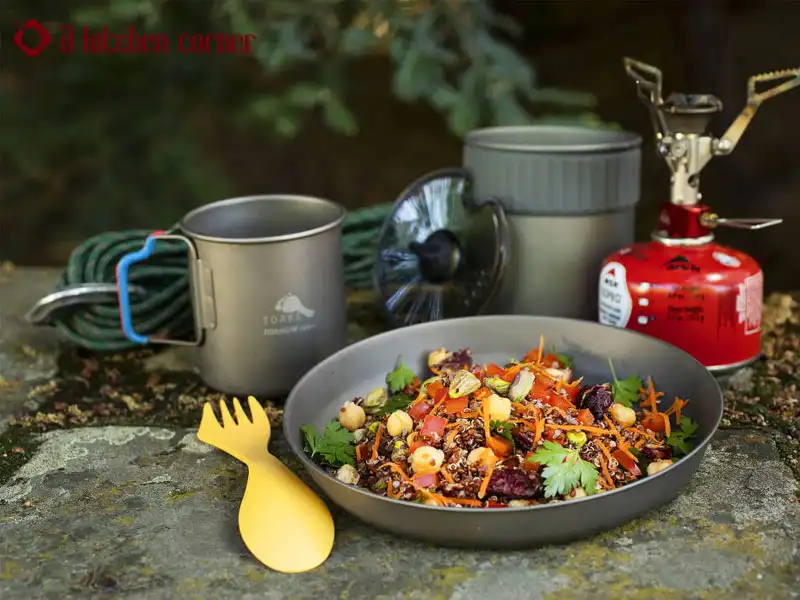How to Use a Dehydrator: The Complete Guide For Beginners
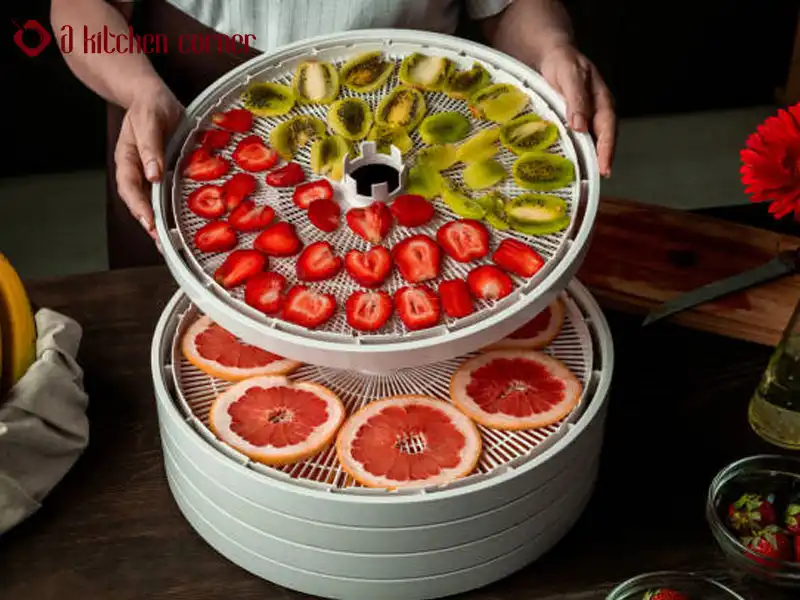
A dehydrator is an excellent investment if you’re interested in preserving food or making your own healthy snacks. Dehydrators are easy to use and can dry foods like fruits, vegetables, and meats without preservatives.
In this article, we’ll discuss the benefits of using a dehydrator, the different types, and how to use a dehydrator. We’ll also suggest the best foods to dehydrate, how to store and maintain the dehydrator, and some tips for you to get the best results.
Contents
Benefits of Dehydrators
Dehydrators offer several benefits that make them a great investment for anyone interested in preserving food or making healthy snacks.
One of the most significant benefits of dehydrators is that they allow you to save money by buying produce in bulk when it’s in season and dehydrating it for use in the future. This is especially useful if you like to cook with fresh ingredients but don’t always have access to them.
With a dehydrator, you can stock up on your favorite fruits and vegetables when they’re in season and enjoy them all year round.
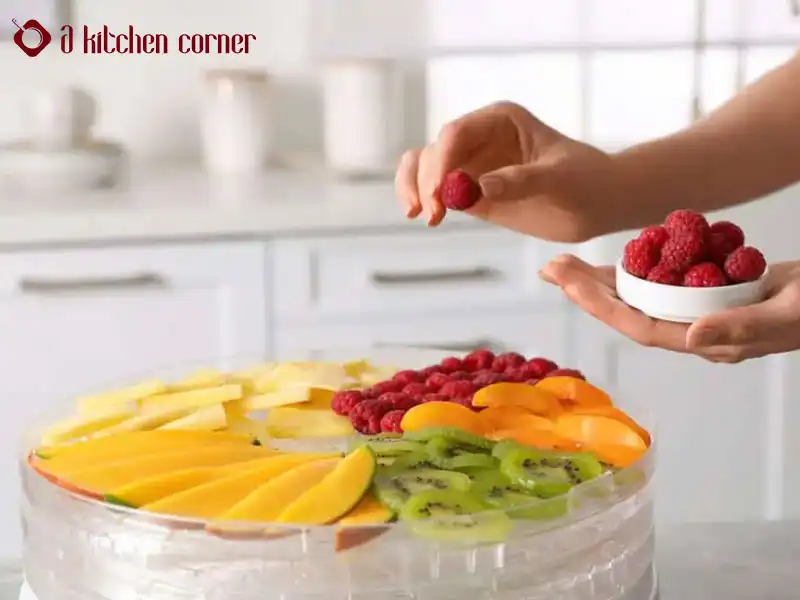
Dehydrators offer several benefits that make them a great investment for anyone
Dehydrating food can also reduce food waste, as you can dehydrate fruits and vegetables on the verge of spoiling. This is a great way to use up produce that might otherwise go to waste and allows you to enjoy your favorite foods for longer.
In addition, dehydrated foods are healthy snacks that can be enjoyed without added sugars, preservatives, or other chemicals. You can also control the amount of salt used, making them healthier.
Types of Dehydrators
There are two main types of dehydrators:
- Vertical flow
- Horizontal flow
Vertical flow dehydrators have a fan and a heating element at the bottom, and the air flows through the trays. Horizontal flow dehydrators have a fan and a heating element at the back, and the air flows horizontally through the trays.
Both types of dehydrators can dry foods effectively. Still, horizontal flow dehydrators are more efficient and require less rotation of trays.
Another type of dehydrator that is becoming increasingly popular is the freeze dryer. By freezing the food and then letting the ice crystals vaporize, the process of freeze drying removes moisture from the food by freezing it and then evaporating the ice crystals.
This type of dehydrator is more expensive than traditional dehydrators. Still, it offers several benefits, including preserving the texture and flavor of the food better.
How to Use a Dehydrator? – Step by step
Using a dehydrator is relatively easy and only requires a few simple steps. To get the best result, you should follow the recipes. Here’s how to use a dehydrator:
- Wash and prepare the food: Start by washing the food thoroughly and slicing it into uniform pieces. It’s essential to ensure the pieces are not too thick or too thin, as this can affect the drying process.
- Arrange the food on the trays: Place the food on the trays, ensuring they’re not touching each other. This will allow the air to circulate around the food and ensure even drying.
- Turn on the dehydrator: Turn on the dehydrator and set the temperature and time as the manufacturer recommends. Most dehydrators have adjustable temperature settings that range from 90°F to 160°F. The type of food you’re dehydrating and the piece’s thickness will affect how long it takes for it to dry.
- Check the food: Check it regularly to ensure it’s drying evenly. You may need to rotate the trays to ensure all the pieces dry evenly.
- Remove the food: When completely dry, turn off the dehydrator and remove the trays. Allow the food to cool completely before storing it in an airtight container.
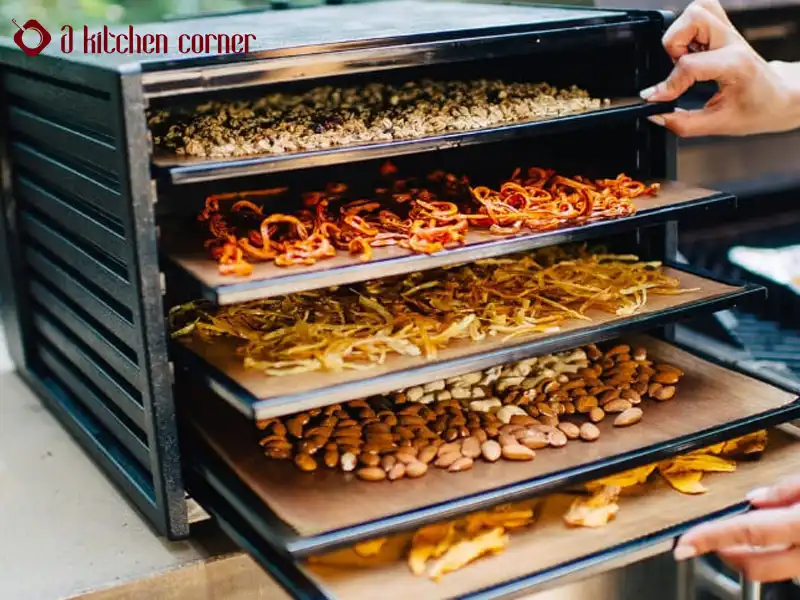
How to use a dehydrator?
Best Foods to Dehydrate
Dehydrators can dry various foods, including fruits, vegetables, meats, herbs, and flowers. Here are some foods to dehydrate:
- Fruits: Apples, bananas, strawberries, blueberries, peaches, and mangoes are great dehydrated options.
- Vegetables: Carrots, peppers, mushrooms, onions, and tomatoes are great dehydrated options. Dried vegetables can add flavor and nutrition to soups, stews, and other dishes.
- Meats: Beef, chicken, turkey, and fish can all be dehydrated to make jerky. Jerky is a high-protein snack that can be enjoyed on the go or as a post-workout snack.
- Herbs: Basil, oregano, thyme, and rosemary can all be dehydrated and used to flavor soups, stews, and other dishes.
- Flowers: Edible flowers like rose petals, lavender, and hibiscus can be dehydrated and used to make tea or as a garnish for desserts.
>> Related post: From Apples to Zucchini: Top 10 Best Foods to Dehydrate for Snacks
Storing and Maintaining Your Dehydrator
Proper storage and maintenance of your dehydrator are essential to ensure it lasts long and works efficiently. Here are some tips for you:
- Store the dehydrator in a cool, dry place away from direct sunlight.
- Clean the dehydrator thoroughly after each use to prevent the buildup of bacteria or mold.
- Use a soft brush or a damp cloth to clean the trays and the interior of the dehydrator.
- Check the heating element and the fan regularly to ensure they work correctly.
Tips When Using a Dehydrator
Here are some pro tips when using a dehydrator:
- Please choose the best-dehydrated foods, ensuring they’re fresh and in season.
- Slice the food into uniform pieces to ensure even drying.
- Pre-treat certain foods like fruits and vegetables by blanching, steaming, or marinating them before drying to improve their taste and texture.
- Use a dehydrator with a timer or a thermometer to make the process more convenient and accurate.
- Always wash your hands and the food items before placing them in the dehydrator to prevent contamination.
- Clean the dehydrator thoroughly after each use to prevent the buildup of bacteria or mold.
By following these tips on how to use a dehydrator, you can get the best results from your dehydrator, making the process easier and more efficient.
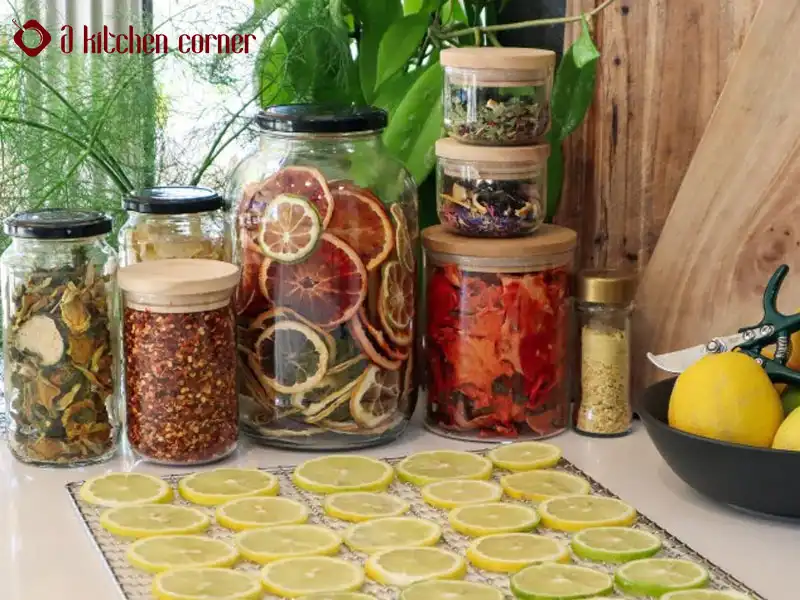
Choose the best-dehydrated foods, ensuring they’re fresh and in season
FAQs
Did you know that dehydrated vegetables are almost as nutritious as fresh ones? Despite the fact that the drying process removes the water content of fruits and vegetables, properly dried food retains almost all of its vitamins and minerals.
Dehydration is a method that significantly lowers the moisture content of food, making it last longer while still maintaining its flavor. This is because dehydrating food reduces its moisture content to a range of 5-20%.
A dehydrator operates by extracting moisture from food items and releasing it into the atmosphere.
To transform it into a humidifier, place one or two bowls of water inside the dehydrator and let it operate.
Soon, all of the water will be dispersed throughout your indoor environment.
Cooking meat prior to dehydration is the most reliable approach to eliminate any dangerous bacteria. However, if proper dehydrating procedures are followed, the pre-drying cooking step may be skipped.
Heating meat to an internal temperature of 160°F and poultry to 165°F eradicates any harmful bacteria and pathogens that may be present.
Conclusion
In conclusion, dehydrating food is an excellent way to preserve and create healthy snacks at home. With a dehydrator, you can easily dry various foods, including fruits, vegetables, and meats, without relying on preservatives.
Following the tips and techniques outlined in this article, you can get how to use a dehydrator and enjoy delicious and nutritious snacks.
If you’re interested in purchasing a dehydrator for your kitchen, check out the selection of high-quality dehydrators available at akitchencorner.com. Whether you’re a seasoned food dehydrating pro or starting out, you’ll find everything you need to start your dehydrating journey.
So why wait? Head to akitchencorner.com today and start dehydrating your way to delicious, healthy snacks!

